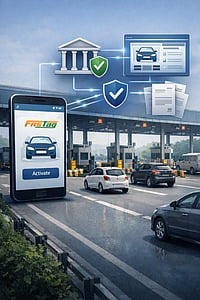In the ever-evolving realm of emergency healthcare, striking a harmonious balance between delivering top-tier care and maintaining cost efficiency is of utmost importance. Hospitals worldwide grapple with the challenge of maintaining high standards of patient care while effectively managing costs, ensuring sustainability, and enhancing patient satisfaction.
As we navigate this complex terrain, exploring innovative strategies that optimize resource utilisation without compromising on the quality of care provided is crucial.
Despite its critical importance as the initial touchpoint with patients, emergency response often takes a back seat in hospital priorities. However, hospitals must recognise the significance of investing in this crucial aspect of care.
By allocating resources towards emergency response, hospitals can not only enhance patient outcomes but also lay the groundwork for delivering superior quality care. Ultimately, such investments pave the way for the development of a healthcare environment where patient well-being is prioritised from the very first encounter.
The Challenge of Quality and Cost Control
Hospitals face the daunting task of navigating the intricacies of quality control and cost control in the global healthcare environment. The rising demand for healthcare services, coupled with escalating costs and evolving patient expectations, underscores the need for a strategic approach to achieving this delicate balance. Valuable insights from successful hospitals worldwide inform effective strategies for optimising resource allocation and enhancing patient outcomes.
Innovative Approaches to Quality-Based, Cost-Effective Care
The evolving landscape of healthcare demands innovative strategies for providing high-quality care that is also cost-effective. Effective communication and coordination emerge as pivotal factors in driving efficiency and maximising value.
A collaborative approach to goal-directed care, facilitated by effective case management, links quality and cost-effective care. Streamlining processes, reducing redundancies, and enhancing care coordination enable hospitals to achieve significant cost savings without compromising patient care quality.
The Role of 5G-Enabled and GPS-Driven Ambulances
Technology, particularly 5G-enabled and GPS-driven ambulances, has transformed emergency healthcare, offering opportunities for streamlining care and reducing turnaround time. Innovative emergency healthcare providers leverage technology to optimise emergency response and enhance patient outcomes.
5G ambulances have super-fast internet that lets emergency room doctors talk, send information, and keep an eye on patients in real time, and their treatment starts as soon as they board an ambulance.
This helps everyone involved - the ambulance crew, hospitals, and other people - work together better to help patients quickly. These ambulances also use GPS technology to find the quickest way to get patients to the hospital, making everything faster and more efficient.
Conclusion
In conclusion, hospitals navigate the intricate landscape of emergency healthcare by integrating innovative technologies and fostering collaboration. Through a multidimensional approach, institutions optimise resource utilisation while prioritising timely, high-quality care. Leveraging cutting-edge strategies and technologies, emergency care providers uphold their commitment to excellence, making a positive impact on patients and communities alike.
Authored by Pranav Bajaj, Co-Founder, Medulance Healthcare



























